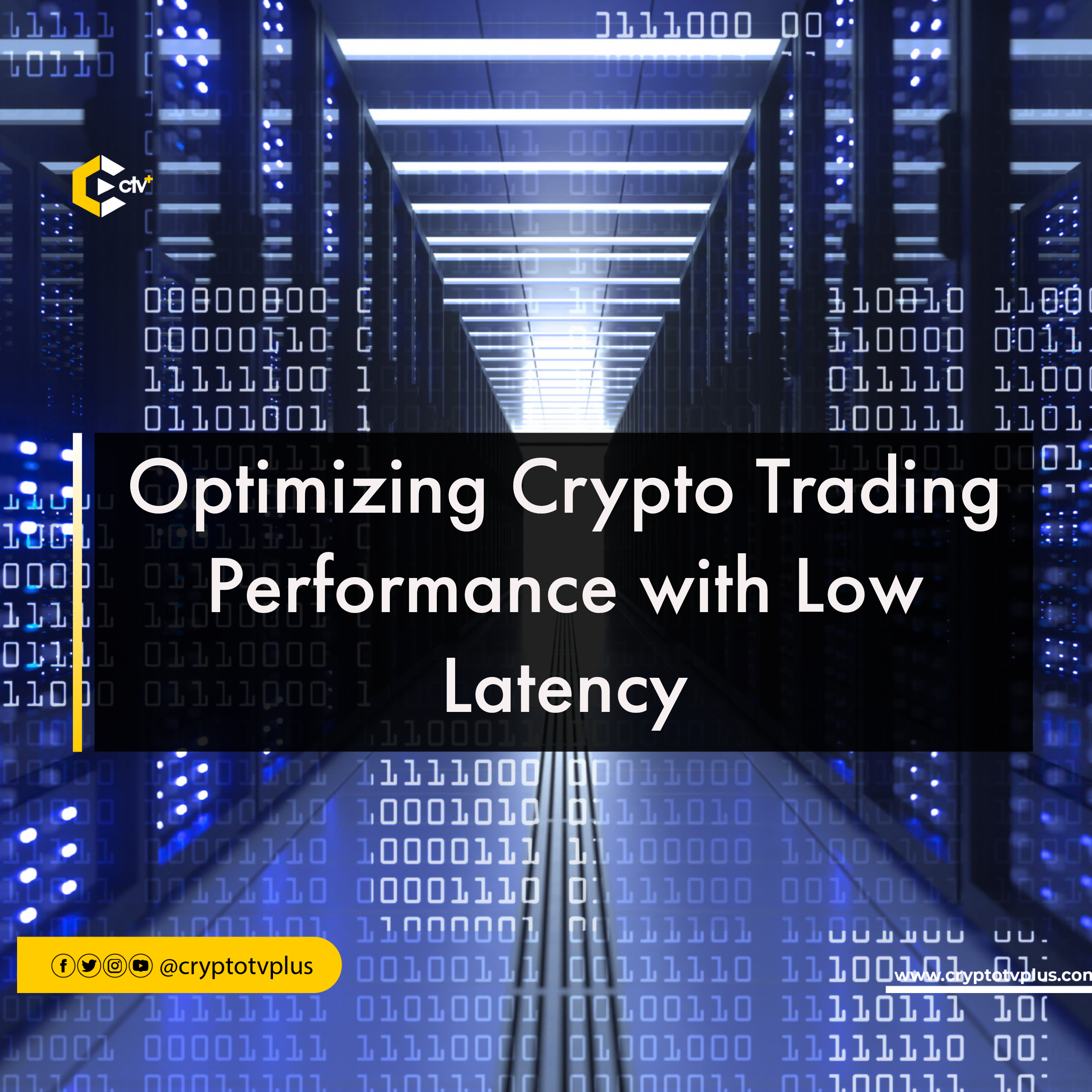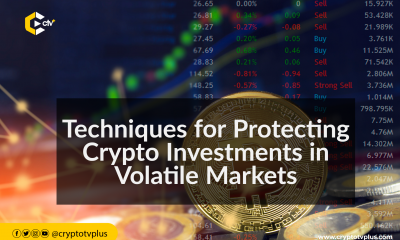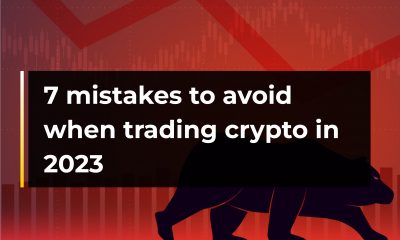FEATURED
How to Improve Your Crypto Trading Performance with Low Latency

As a trader, you’re always looking for the best trading prices, especially in the highly volatile crypto space. You’re well aware that every millisecond of delay can make a significant difference in pricing, and that’s where low latency comes in. But what is latency?
Latency is the time delay between a request and a response. It is the time taken for data to be transmitted between systems. In the context of trading, latency refers to the delay between the time a trader places an order and when the order is executed.
When you place an order, you expect it to be executed quickly. But sometimes, your order lags, and you’re left wondering why. That’s because the speed at which your order is executed is directly tied to latency. Hence the need for low latency.
Low latency is crucial as it allows traders to place and execute orders quickly, securing the best trading prices. Ultra-low latency is particularly important in the high-frequency trading side of the highly volatile crypto space, where every millisecond of delay can make a significant difference in pricing, and where traders need to react quickly to take advantage of market opportunities.
In the world of trading, time is money and every second counts. A delay of even a few milliseconds can mean the difference between making a profit or a loss. That’s why exchanges and crypto networks need to be optimized to process large volumes of data with minimal delay and latency.
Latency can be caused by a variety of factors, such as network speed, technological advancement, and the processing power of the exchange. To cater to the rapidly changing pricing information, crypto networks and exchanges need to be optimized to efficiently process large volumes of data with minimal delay and latency.
In this article, we will explore the concept of latency in the crypto space, its impact on crypto trading and the importance of low-latency solutions in the crypto space.
Importance of low latency in crypto trading
Real-time asset prices are crucial in the crypto space as prices can fluctuate within fractions of a second. Traders need to have access to real-time data and execute trades as quickly as possible to take advantage of these price changes. This is why crypto exchanges and blockchain networks inspire their users’ confidence by assuring them that trades are being processed in real-time.
In a crypto exchange, latency can occur at various stages of the trading process. When a trader places an order, the order must be transmitted to the exchange’s servers. If there is latency in the transmission, the order may arrive too late and miss out on the best price.
Once the order is received, it must be matched with a counterparty’s order. If there is latency in the matching process, the trade may not be executed at the intended price. Additionally, if the exchange experiences high latency during periods of high trading volume, it may struggle to keep up with the demand for real-time pricing information and order execution.
Low latency solutions for crypto trading
To achieve ultra-low latency in crypto trading, various technologies and strategies are used. These include:
1. Colocation: Colocation involves placing trading servers in the same data centre as the exchange’s servers, reducing the distance data needs to travel.
2. High-speed data transmission: High-speed data transmission technology, such as fibre-optic cables, can transmit data at speeds of up to 10 gigabytes per second, reducing latency.
3. Low-latency trading software: Low-latency trading software can process large amounts of data quickly, reducing the time it takes to execute orders. It can also help traders to analyze market conditions and make informed trading decisions in real time.
Here are some recent real-life use cases of low-latency solutions in crypto trading:
- In 2019, the crypto exchange Binance announced that it had achieved a 5-millisecond order response time using its low-latency trading system. This system was developed in collaboration with Kx, a high-performance technology provider. The low-latency trading system helped Binance to reduce latency and provide traders with faster order execution times.
- In October 2022, the now-defunct cryptocurrency platform FTX announced the use of low-latency trading technology to provide traders with fast and efficient trading experiences. The low-latency trading system helped FTX.US to achieve order response times of less than 50 microseconds, which is significantly faster than many other crypto exchanges.
- In February 2022, BitMEX announced that Avelacom – which has pioneered low latency access solutions to crypto exchanges via its proprietary fibre network – had joined the BitMEX Partner Programme to provide access to real-time market data and order execution. The partnership helped BitMEX to reduce order response times and improve its overall trading performance.
These examples demonstrate how low-latency solutions are being used to improve trading experiences for crypto traders.
Read also: Transforming Global Payments: Cryptocurrency’s Impact on Remittances & Cross-border Transactions
How to measure latency in crypto trading
To improve latency in crypto trading, it is essential to have the right tools to measure it. Key performance indicators (KPIs) are:
- order-to-trade time
- round-trip time, and
- order execution time
Order-to-trade time measures the time it takes for an order to be received and executed by the exchange. The faster the order-to-trade time, the lower the latency.
Round-trip time measures the time it takes for a message to travel from the trader to the exchange and back. This includes the time it takes for the trader’s computer to send the message, the time it takes for the message to travel across the internet, and the time it takes for the exchange to receive and process the message.
Lastly, tick-to-trade time measures the time it takes for an order to be executed after the price has changed. This is important for traders who need to execute orders quickly to take advantage of market opportunities.
By monitoring these KPIs, exchanges and traders can ensure that orders are executed quickly and efficiently. This can help traders to make informed decisions based on real-time market conditions and take advantage of trading opportunities before they disappear.
Risks & challenges associated with low latency in crypto trading
While low latency solutions can benefit traders, they also come with risks and challenges. One of the main risks is cybersecurity. Cybersecurity risks associated with low latency solutions include Distributed Denial of Service (DDoS) attacks, where attackers can overwhelm the system with traffic, causing delays and downtime. These cybercriminals can exploit low-latency networks to gain an advantage in trading or stealing sensitive information.
Maintaining low latency solutions for crypto trading can also be challenging, as it requires a high level of expertise and ongoing maintenance. The costs associated with implementing and maintaining low-latency solutions can also be high, making it difficult for smaller exchanges to compete.
Conclusion
Latency is a critical factor in the world of crypto trading, where every millisecond can make a significant difference in pricing. Crypto exchanges must ensure ultra-low latency to process the high volumes of data that come through in short time intervals and to manage high volatility so that traders can take advantage of real-time asset prices. As the crypto market continues to grow, the importance of ultra-low latency will only continue to increase.

























Pingback: Debt, Deficits & Crypto: How Government Spending Impacts the Markets | CryptoTvplus: DeFi, NFT, Bitcoin, Ethereum Altcoin, Cryptocurrency & Blockchain News, Interviews, Research, Shows